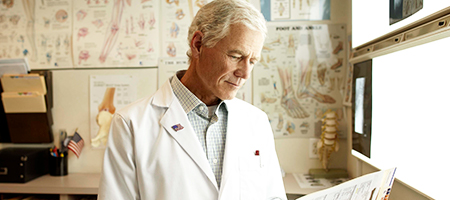
How Health Plays Into Safety at Work
Healthy employees can make better employees, because health at work impacts safety at work.
In recent years, rising healthcare and insurance costs have inspired small business owners to investigate and adopt workplace health programs to boost employee safety. Healthy employees are less likely to have workplace accidents, which in turn impacts a small business’ bottom line.
“Maintaining a healthier workforce can lower direct costs, such as insurance premiums and worker’s compensation claims,” the Centers for Disease Control (CDC) said. “It will also positively impact many indirect costs such as absenteeism and worker productivity.”
The CDC has solidified its commitment to workplace health and safety with its Workplace Health Resource Center, which aims to help America’s 156 million full-time workers achieve better work-life balance, stay healthier and be less prone to on-the-job injuries and illnesses. In 2017, the center released its first “Workplace Health in America” survey, which found a growing number of American businesses now offer health promotion programs to their employees. This includes everything from encouraging physical activity and health screenings to addressing healthier eating in the workplace and reducing alcohol and tobacco use. The CDC also provides a CDC Worksite Health ScoreCard to help employers assess how well they have implemented evidence-based health promotion interventions in their worksites.
Health at home, health at work
Getting a good night’s rest is a good first step to good health. Tough work schedules can sometimes disrupt the body’s natural cycle, leading to increased fatigue, stress and lack of concentration. The Occupational Safety and Health Administration (OSHA) also notes “too little, poor quality or interrupted sleep over a period of time can cause fatigue.” Fatigued workers can make safety mistakes, sometimes detrimental ones.
“Accident and injury rates are 18% greater during evening shifts and 30% greater during night shifts when compared to day shifts,” OSHA says. “Research indicates that working 12 hours per day is associated with a 37% increased risk of injury.”
The Oregon Institute of Occupational Health has developed a comprehensive “Health Impacts Safety” teaching guide to help business owners encourage better health practices for their workers. In addition to sleep and fatigue, it addresses several healthy practices at home and at work to improve worker health. For example, a practice many American workers engage daily in without thought – sitting. Sitting at a desk, staring at a computer and typing all day can cause minor to severe injuries. Slouching, improper monitor placement and unsuitable desk height can lead to ailments such as back pain, carpal tunnel syndrome and eyestrain. That’s why proper desk posture and proper desk ergonomics are vital to the health of office workers. The “Health Impacts Safety” guide further instructs businesses owners to encourage workers to get up and move at least once every half hour. Read more about proper desk ergonomics here.
Good health includes healthy eating habits at work. Eating healthy cuts the risk of heart disease and some forms of cancer, and it can improve worker mood, reduce their anxiety and stress, and help them be better focused and accident prone, the “Health Impacts Safety” guide reports. Owners can stock vending machines with healthier snack options, offer refrigerators and microwaves so workers can bring healthy lunches from home, and offer healthier options when providing food at lunch-and-learns and other meetings.
Owners should encourage sick workers to stay home instead of coming in and trying to be the hero. Working while sick risks getting others at the workplace sick and increases the risk of on-the-job injury, the “Health Impacts Safety” guide says. Further, “presenteeism” – when employees show up to the workplace but are not 100% operational because of an illness, injury or other condition – can cut productivity 30% or more.
No matter the occupation, work causes stress. The office worker in the high-rise and the dock worker on the river will inevitably feel some form of stress as part of their jobs. Stressed out workers can have trouble concentrating. Chronic stress contributes to hypertension, stroke and heart disease, and it increases risk of having accidents at work. Owners should encourage healthy work-life balance, be clear about job expectations and encourage workers to find ways to handle their stress in healthy ways. This could include going for a walk, meditating, deep breathing exercises or seeing a licensed professional counselor to talk through problems.
OSHA says small business owners can see direct cost-savings, including lower workers’ compensation insurance costs, when they help keep workers healthy. Reduced indirect costs can include increased productivity and morale, better quality products, improved labor and management relations and improved employee retention.
EMPLOYERS® is committed to helping small businesses operate safer, more efficient workplaces. Contact EMPLOYERS® today to learn more about our cost-effective workers’ compensation insurance.
The information provided is intended to provide a general overview. This information is not legal advice and should not be relied on as such. EMPLOYERS® makes no warranties for the accuracy, adequacy, or completeness of the information provided, and will not be responsible for any actions taken based on the information contained herein. If you have legal questions or need legal advice, please consult an attorney.
